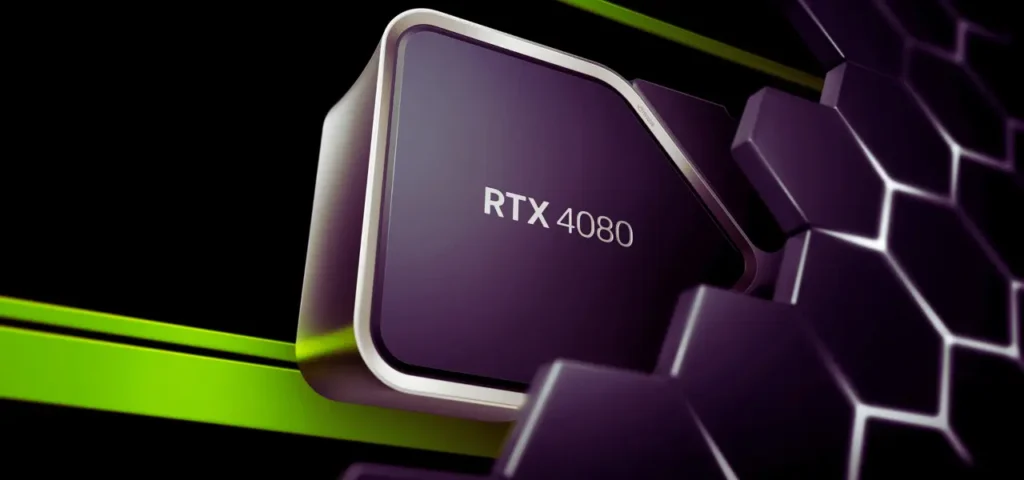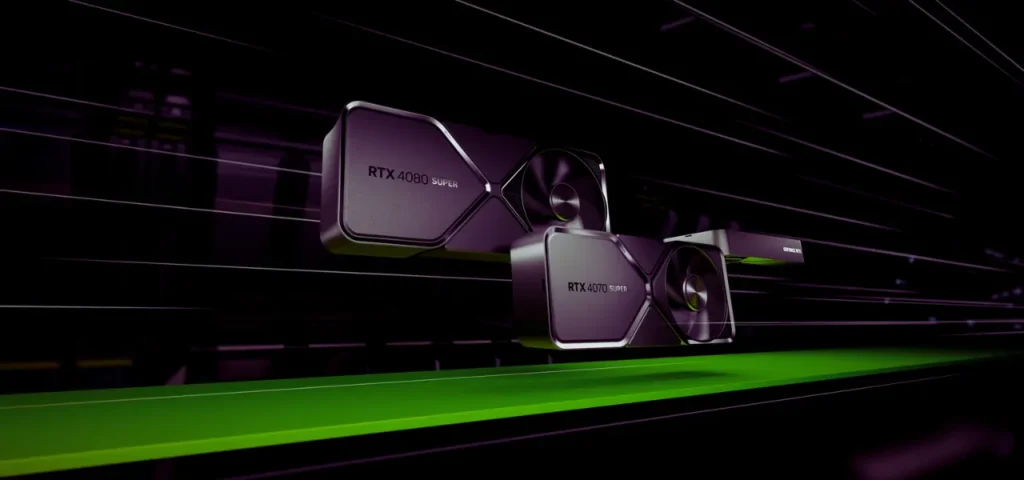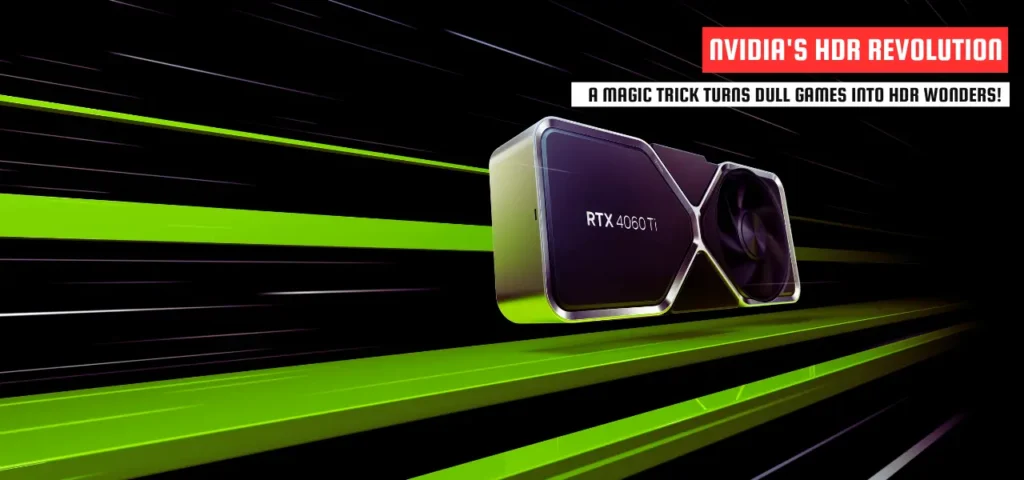In the ever-evolving landscape of gaming technology, Nvidia HDR Revolution is improving how we experience our favorite titles. A recent discovery by a keen-eyed modder has sent ripples across the gaming community, uncovering Nvidia’s latest venture – a feature capable of converting Standard Dynamic Range (SDR) games into High Dynamic Range (HDR), promising to elevate gaming visuals to new heights.
The Discovery of RTX True HDR
The tech world is buzzing with the news of Nvidia’s hidden gem within its latest Game Ready driver. A modder, while digging through Nvidia’s 511.23 graphics drivers, stumbled upon several hidden “TrueHDR” profile settings. This revelation suggests Nvidia is not just tinkering but is on the cusp of introducing a feature that could change the game – literally.
What’s the Big Deal?
For the uninitiated, the transition from SDR to HDR might not seem like a groundbreaking leap. However, anyone who’s witnessed HDR in action knows it’s not just about brighter brights and darker darks; it’s about enriching the visual experience with a broader color spectrum and a more immersive depth of field. Yet, the gaming world has been lagging in this area, with many titles still not supporting HDR, or doing so poorly.
Nvidia HDR vs. SDR Gaming Comparison
| Feature | SDR Gaming | HDR Gaming |
|---|---|---|
| Color Depth | Limited | Extended |
| Brightness Range | Narrow | Wide |
| Contrast | Standard | Enhanced |
| Immersion | Basic | Deep |
Take “Starfield,” for example. Despite being one of the most anticipated releases from Microsoft, it dropped the ball on HDR calibration tools. This is not just a missed opportunity but a reflection of a larger issue within the industry. Developers often skip the HDR implementation due to the significant increase in workload and the relatively small audience with access to true HDR-capable displays.
Nvidia’s Solution
Enter Nvidia’s SDR-to-HDR conversion tool. Leveraging the power of Tensor Cores, this tool could be the bridge to HDR gaming for titles lacking native support. If Nvidia’s past successes, like DLSS, are anything to go by, this feature could be a game-changer, allowing gamers to experience a vast library of titles in a new light, without the need for developers to double their color grading efforts.
Benefits of Nvidia’s SDR-to-HDR Conversion Tool
- Enhanced Visual Experience: Bring a new level of depth and realism to games.
- Broader Game Compatibility: Older and less advanced titles can shine in HDR.
- Reduced Development Workload: Developers can focus on game design over HDR implementation.
- Inclusive Gaming: More gamers can enjoy HDR without needing HDR-ready games.

Nvidia HDR Revolution: But, There’s a Catch
As promising as it sounds, the actual performance of Nvidia’s HDR conversion tool remains shrouded in mystery. The modder behind the discovery didn’t provide any visual evidence of the feature in action, leaving us to speculate on its effectiveness. Plus, with Nvidia keeping mum about the feature, it’s unclear when or if it will be officially rolled out.
The Promise of a Brighter Future
Despite these uncertainties, the potential impact of Nvidia’s SDR-to-HDR conversion tool is undeniable. It hints at a future where gamers can enjoy an HDR experience across more titles, breathing new life into older or less technically advanced games. For HDR enthusiasts and the gaming community at large, this could mean a richer, more vibrant gaming world is just around the corner.
The Potential Impact on Gaming
Nvidia’s venture into SDR-to-HDR conversion, dubbed RTX TrueHDR, isn’t just a technical achievement; it represents a significant shift in how games could be developed and experienced in the future. By harnessing the power of generative AI and Tensor Cores, Nvidia is paving the way for a broader adoption of HDR in gaming, potentially making it a new standard rather than a luxury.
Challenges and Considerations
Despite the excitement, several questions and challenges remain. The foremost concern is the quality of conversion. Can a tool truly replicate the depth and vibrancy of native HDR content? Additionally, there’s the matter of performance impact. HDR processing is resource-intensive, and while Tensor Cores are designed to handle AI and machine learning tasks efficiently, the added workload could affect overall game performance, especially in titles where every frame counts.
Challenges vs. Solutions for SDR-to-HDR Conversion
| Challenge | Solution |
|---|---|
| Quality of Conversion | Advanced AI algorithms to accurately map SDR colors to HDR |
| Performance Impact | Optimization and efficient use of Tensor Cores to minimize FPS loss |
| Developer Adoption | Demonstrating ease of integration and clear benefits to encourage use |
| Consumer Accessibility | Ensuring compatibility with a wide range of HDR monitors and TVs |

The Future of Gaming with HDR
Looking ahead, the integration of RTX TrueHDR could democratize HDR gaming, making it accessible to players regardless of the native support of their favorite titles. This transition could also influence game development, encouraging studios to focus on creating more dynamic and visually engaging worlds, knowing that HDR can be achieved with less effort.
The Future Possibilities with Nvidia’s HDR Conversion
- Universal HDR Gaming: A future where all games, regardless of their release date or development budget, can be enjoyed in HDR.
- Enhanced Game Design: Developers might take bolder visual design choices, pushing the boundaries of gaming aesthetics.
- Greater Hardware Utilization: Gamers could see the full potential of their HDR-capable monitors and TVs, encouraging further advancements in display technology.
- Increased Adoption of HDR: As HDR becomes more accessible, its demand could surge, setting a new standard in gaming visuals.
A New Dawn for HDR Gaming?
Nvidia’s RTX TrueHDR could represent a new dawn for HDR gaming, offering a solution to a longstanding barrier in game development and experience. While it’s too early to declare it an unqualified success, the prospects are tantalizing. The gaming community eagerly awaits real-world demonstrations and the official rollout of this technology. Nvidia’s track record suggests that RTX TrueHDR could indeed be the next big leap, not just for HDR gaming, but for the visual experience of digital entertainment as a whole.
As we stand on the brink of this potential revolution, one thing is clear: the future of gaming looks brighter than ever. With technologies like RTX TrueHDR, we’re not just playing games; we’re stepping into worlds more vivid and immersive than we could have imagined.
Expected Benefits of RTX TrueHDR in Gaming
| Benefit | Description |
|---|---|
| Visual Enhancement | Games will look more realistic and immersive with improved color depth and contrast. |
| Increased Game Lifespan | Older titles can be revitalized, offering a fresh experience to new and returning players. |
| Development Efficiency | Reduces the need for developers to create separate HDR versions, streamlining the game production process. |
In conclusion, while Nvidia’s RTX TrueHDR is still shrouded in some mystery, its potential to redefine gaming’s visual landscape is undeniable. Gamers and developers alike are watching closely, ready to embrace a future where every game can shine in the full spectrum of HDR glory.
YOU MAY ALSO LIKE :
- Battle of the Titans: Sony vs. Microsoft 2024 Showdown Will Blow Your Mind!
- Game Changer Alert: Stellar Entertainment Teases Epic Burnout Revival!
- Unbelievable! Genshin Impact 4.4 Drops a Bombshell of Excitement!
- You Won’t Believe This Game: How Palworld Is Redefining Indie Success!
- Sony’s State of Play Jan 2024: A Rollercoaster of Reveals and Rumors!
- Horizon Forbidden West PC Launch: When Titans Clash in March Madness!

I’m a lifelong gamer and industry enthusiast. I’ve closely witnessed the remarkable progress made by the gaming world. Today, I’m thrilled about the industry’s future and the limitless possibilities it holds. Join me as we delve into gaming’s rich history, the exciting present, and the boundless potential of tomorrow







